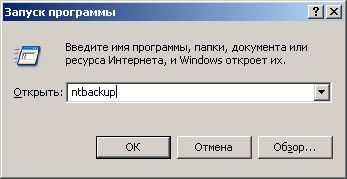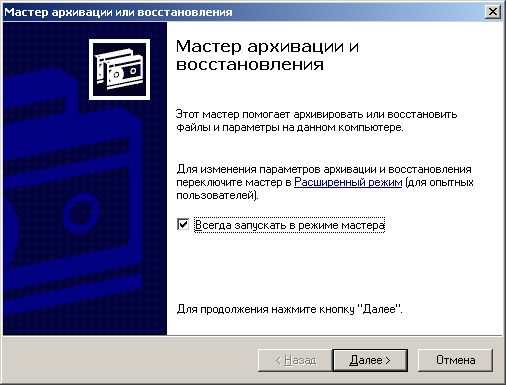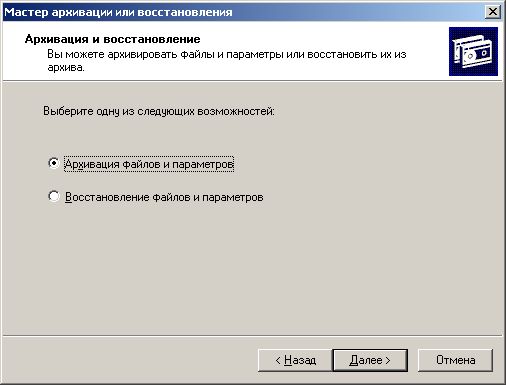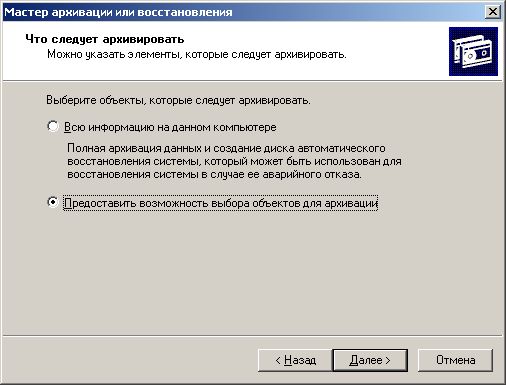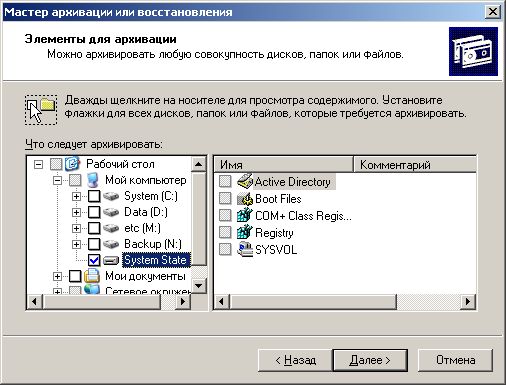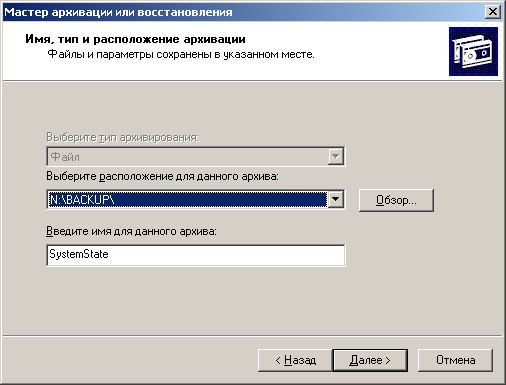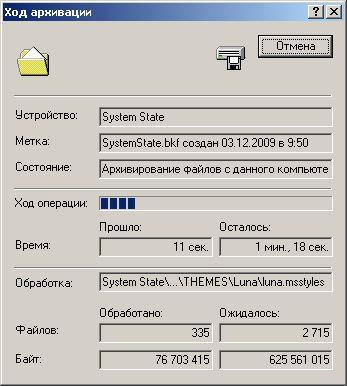Имеется два домен контроллера под управлением ОС Windows Server 2008 r2. Один из них хозяин схемы и всех ролей. Оба настроены в реплику. Когда на одном делаю изменения допустим в AD, то во втором они тоже появляются.
Спустя примерно месяц после настройки домена в логах обоих серверов стала появляться ошибка с кодом 2089 каждый день в одно и то же время. Текст ошибки
«Not able to obtain the full description for event ID 2089 from source NTDS Replication. This may happen if this computer is not able to access the event log message file on the analyzed computer or the message file does not exist.
Looking up this event/source combination through www.eventid.net may reveal the actual description.
The event log message contains the following parameters (sometimes this represents the message description itself):
CN=Configuration,DC=companename,DC=local
90
SystemCurrentControlSetServicesNTDSParameters
Backup Latency Threshold (days) «
и еще 4 похожие ошибки, но с отличием в одной строке:
-DC=companename,DC=local
-CN=Schema,CN=Configuration,DC=companename,DC=local
-DC=ForestDnsZones,DC=companename,DC=local
-DC=DomainDnsZones,DC=companename,DC=local
Похоже, что ругается на репликацию, но сервера вроде реплицируются. Подскажите, как избавиться от этого ивента?
- Remove From My Forums
-
Question
-
Hi Folks;
I started seeing this error on my DC’s after testing out Veem VM backup software. Prior to installing that software this event id entry never appeared.
It seems that the Veem software ‘turned on’ monitoring of the directory partition and whether it has been backed up.
The error is occurring on Windows 2008 R2 domain controllers.
I’m not interested in discussing backup strategies or how to adjust the time frame that these event ID’s show up…. or how to use Windows Backup to address the issue.
What I would like to know is how to turn off this monitoring
as it was before VEEM was installed. Does anyone know how to do this?
Q: Marking a question as answered when it’s not — is this something new? A: Not at all, it’s standard Nick Gu!
- Remove From My Forums
-
Question
-
Hi Folks;
I started seeing this error on my DC’s after testing out Veem VM backup software. Prior to installing that software this event id entry never appeared.
It seems that the Veem software ‘turned on’ monitoring of the directory partition and whether it has been backed up.
The error is occurring on Windows 2008 R2 domain controllers.
I’m not interested in discussing backup strategies or how to adjust the time frame that these event ID’s show up…. or how to use Windows Backup to address the issue.
What I would like to know is how to turn off this monitoring
as it was before VEEM was installed. Does anyone know how to do this?
Q: Marking a question as answered when it’s not — is this something new? A: Not at all, it’s standard Nick Gu!
- Remove From My Forums
-
Question
-
Hello, we are continuously getting the event 2089 in the logs.
This directory partition has not been backed up since at least the following number of days.
We have gone through he following article https://technet.microsoft.com/en-us/library/dd941837(v=ws.10).aspx and the backup is always successful. Once this was completed this event would go dormant for some time.
Now it appears everyday. The Backup Latency Threshold is set to 180 days.Any ideas?
Thank you
All replies
-
AFAIK,means that you need to do a «System State» backup of at least one of your domain controllers to backup your Active Directory database.
This posting is provided AS IS with no warranties or guarantees,and confers no rights. Best regards Burak Uğur
- Proposed as answer by
Monday, March 27, 2017 8:21 AM
- Proposed as answer by
-
- Proposed as answer by
Wendy Jiang
Monday, March 27, 2017 8:21 AM
- Proposed as answer by
-
Hello, yes, I have been doing backups of the system state and they are successful. However, we are still receiving this event log the next day for example. it have been my experience that this event log stops after the system state backup for a period of
180 days. Or am I missing something?Thank you
-
Hi
Please ensure that the domain controller is configured to back up the directory database within a time interval that is more frequent than the tombstone lifetime for the forest.
Checke «verify» section,and also if you take backup with non-microsoft product you should check procedure from vendor.
https://technet.microsoft.com/en-us/library/dd941837(v=ws.10).aspx
This posting is provided AS IS with no warranties or guarantees,and confers no rights. Best regards Burak Uğur
- Proposed as answer by
Wendy Jiang
Friday, March 31, 2017 9:29 AM
- Proposed as answer by
Страницы
- Друзья
- Карта сайта
- О сайте
Промо
На основном контроллере домена (PDC) с недавних пор начало появляться сообщение — «Ошибка 2089 — Этот раздел каталога не архивировался по крайней мере указанное количество дней». Чёрти что. Всё работает нормально, но сообщение смущает. Не нормально ведь.
Тип: Предупреждение
Источник: NTDS Replication
Категория: Архивация данных
Код (ID): 2089
Дата: 9.12.2005
Время: 19:05:24
Пользователь: NT AUTHORITYАНОНИМНЫЙ ВХОД
Компьютер: Svtorcm
Описание: Этот раздел каталога не архивировался по крайней мере указанное количество дней.
Раздел каталога: DC=local
Интервал задержки архивации (дней): 30
Рекомендуется создавать архивную копию как можно чаще, чтобы обеспечить возможность восстановления в случае аварийной потери данных. Однако в том случае, если архивная копия не создавалась в течение указанного как «интервал задержки архивации» количества дней, это сообщение будет записываться в журнал каждый день до тех пор, пока не будет создана архивная копия. Можно сделать архивную копию любой реплики, содержащей этот раздел.
По умолчанию интервал задержки архивации устанавливается равным половине интервала времени жизни захоронения. Чтобы изменить интервал задержки архивации, можно добавить следующий раздел реестра.
Раздел реестра для интервала задержки архивации:
SystemCurrentControlSetServicesNTDSParametersBackup Latency Threshold (days)
Уже где то дней 15 выскакивает это сообщение с периодичностью в 24 часа. Причем выскакивает еще шесть сообщений которые отличаются между собой только параметром в описании:
1.Раздел каталога: DC=local
2.Раздел каталога: CN=Configuration,DC=local
3.Раздел каталога: CN=Schema,CN=Configuration,DC=local
3.Раздел каталога: DC=DomainDnsZones,DC=local
4.Раздел каталога: DC=ForestDnsZones,DC=local
5.Раздел каталога: DC=TAPI3Directory,DC=local
Для того чтобы в Windows Server 2003 избежать ошибки — необходимо воспользоваться стандартной утилитой ntbackup.exe (Архивация данных) и не реже чем 1 раз в 90 дней делать резервную копию SystemState — можно в ручную, можно по расписанию.
Как это сделать расскажу дальше.
«Пуск — Выполнить — ntbackup».
Запускаем в режиме мастера.
Открылось окно выбора действий.
Архивируем файлы и параметры.
Выбираем объекты, которые будем архивировать. В нашем случае это SystemState, со всем его содержимым.
Выбираем размещение и имя архива. И жмём Далее.
Поехали.
После того как бекап будет сделан, предупреждения перестанут появляться. Рекомендую добавить это задание в планировщик.
Комментарии
|
Комментарий от ts [ 9 августа, 2013, 15:00 ] |
|
Спасибо! |
|
Комментарий от Вадим [ 10 сентября, 2014, 07:23 ] |
|
Спасибо огромное за статью! |
|
Комментарий от Роман [ 19 ноября, 2014, 12:27 ] |
|
Спасибо за статью! |
Поиск по сайту
Статистика
Мета
- Админ
- RSS записей
- RSS комментариев
Functionality on all three of my domain controllers seem to be running fine….
Does anyone have any suggestions for this event being logged?
=========================================================
Event Type: Warning
Event Source: NTDS Replication
Event Category: Backup
Event ID: 2089
Date: 6/15/2009
Time: 4:09:19 AM
User: NT AUTHORITYANONYMOUS LOGON
Computer: SMADC4
Description:
This directory partition has not been backed up since at least the following number of days.
Directory partition:
DC=salesmaster,DC=local
‘Backup latency interval’ (days):
30
It is recommended that you take a backup as often as possible to recover from accidental loss of data. However if you haven’t taken a backup since at least the ‘backup latency interval’ number of days, this message will be logged every day until a backup is taken. You can take a backup of any replica that holds this partition.
By default the ‘Backup latency interval’ is set to half the ‘Tombstone Lifetime Interval’. If you want to change the default ‘Backup latency interval’, you could do so by adding the following registry key.
‘Backup latency interval’ (days) registry key:
SystemCurrentControlSetServicesNTDSParametersBackup Latency Threshold (days)
For more information, see Help and Support Center at http://go.microsoft.com/fwlink/events.asp Opens a new window.
=========================================================
Event ID 2089 — Backups
Updated: November 25, 2009
Applies To: Windows Server 2008
You should back up the directory database on a domain controller routinely so that if hardware fails or data becomes corrupt, you can quickly recover the information in the database.
Event Details
| Product: | Windows Operating System |
| ID: | 2089 |
| Source: | Microsoft-Windows-ActiveDirectory_DomainService |
| Version: | 6.0 |
| Symbolic Name: | DIRLOG_BACKUP_LATENCY_WARNINGS |
| Message: | This directory partition has not been backed up since at least the following number of days.
Directory partition: “DN of the partition” ‘Backup latency interval’ (days): “Value in days of the backup latency interval” It is recommended that you take a backup as often as possible to recover from accidental loss of data. However if you haven’t taken a backup since at least the ‘backup latency interval’ number of days, this message will be logged every day until a backup is taken. You can take a backup of any replica that holds this partition. By default the ‘Backup latency interval’ is set to half the ‘Tombstone Lifetime Interval’. If you want to change the default ‘Backup latency interval’, you could do so by adding the following registry key. ‘Backup latency interval’ (days) registry key: |
Resolve
Ensure that backups are taken more frequently than the backup latency interval
You should ensure that the Active Directory database is backed up more frequently than the interval that is set for the tombstone lifetime of your forest. If you are using a non-Microsoft backup solution and you confirm that the backup interval is more frequent than the tombstone lifetime, you may want to contact the vendor of the backup solution so that they can register their backups in Active Directory Domani Services (AD DS), as recommended.
You can use Windows Server Backup or a non-Microsoft program to back up system state on a domain controller. If you plan to use a non-Microsoft program, check the software vendor’s instructions for completing and verifying the system state backup. For more information, see Steps for Backing Up and Recovering AD DS (http://go.microsoft.com/fwlink/?LinkId=151349).
The following procedures guide you through the process of installing Windows Server Backup and creating a manual backup from the command line. You may want to consider scheduling backups with the Task Scheduler application. For more information, see Task Scheduler How To (http://go.microsoft.com/fwlink/?LinkId=151352).
Membership in Builtin Administrators or Backup Operators, or equivalent, is the minimum required to complete these procedures. In addition, you must have write access to the target backup location. Review details about default group memberships at http://go.microsoft.com/fwlink/?LinkID=150761.
To install Windows Server Backup:
- Click Start, click Administrative Programs, and then click Server Manager. Right-click Features, and then click Add Features.
- Expand Windows Server Backup Features, and then click Windows Server Backup. As an option, you can click Command-line Tools. Click Next.
- Click Install. After the installation is complete, click Close.
For additional options for installing Windows Server Backup, see Active Directory Backup and Restore in Windows Server 2008 (http://go.microsoft.com/fwlink/?LinkID=149696).
To perform a manual system state backup of a domain controller from a command prompt:
- Open a command prompt as an administrator. To open a command prompt as an administrator, click Start. In Start Search, type Command Prompt. At the top of the Start menu, right-click Command Prompt, and then click Run as administrator. If the User Account Control dialog box appears, enter the appropriate credentials (if requested) and confirm that the action it displays is what you want, and then click Continue.
- At the command prompt, type the following command, and then press ENTER: wbadmin start systemstatebackup -backuptarget:<drive>: -quiet. Substitute the actual drive letter or volume to which you want to send the backup for <drive>. If you do not specify the -quiet parameter, you are prompted to press Y to proceed with the backup operation. The target volume for a system state backup can be a local drive, but it cannot be any of the volumes that are included in the backup by default.
Note: To store the system state backup on a volume that is included in the backup, you must add the AllowSSBToAnyVolume registry entry to the server that you are backing up. There are also some prerequisites for storing system state backup on a volume that is included in the backup. For more information, see Known Issues for AD DS Backup and Recovery (http://go.microsoft.com/fwlink/?LinkID=117940).
For more information, see Create Backups of the System State Using a Command Line (http://go.microsoft.com/fwlink/?LinkID=151353).
Verify
Ensure that the domain controller is configured to back up the directory database within a time interval that is more frequent than the tombstone lifetime for the forest. However, if the forest functional level is raised to Windows Server 2008 R2 and the Active Directory Recycle Bin feature is enabled, backups should occur more frequently than the lesser of the values that are set for the tombstoneLifetime and msDS-deletedObjectLifetime attributes).
Note: If no value is set for msDS-deletedObjectLifetime, the value that is set for the tombstoneLifetime is used.
Membership in Enterprise Admins, or equivalent, is the minimum required to complete this procedure. Review details about default group memberships at http://go.microsoft.com/fwlink/?LinkID=150761.
Check the value for the backup latency interval threshold
The default time period of the backup latency interval is half the tombstone lifetime value, when the Active Directory Recycle Bin feature is not enabled. The default tombstone lifetime is 60 or 180 days, depending on the domain controller operating system version that was used to create the forest. For more information, see Determine the Tombstone Lifetime for the Forest (http://go.microsoft.com/fwlink/?LinkID=137177). If the Active Directory Recycle Bin is enabled, the backup latency interval becomes half the lesser of the values of tombstoneLifetime and msDS-deletedObjectLifetime.
Note: After the Active Directory Recycle Bin feature is enabled, it cannot be disabled.
To check the value of the backup latency interval:
- Open a command prompt as an administrator. To open a command prompt as an administrator, click Start. In Start Search, type Command Prompt. At the top of the Start menu, right-click Command Prompt, and then click Run as administrator. If the User Account Control dialog box appears, confirm that the action it displays is what you want, and then click Continue.
- At the command prompt, type regedit, and then press ENTER.
- In the Registry Editor, navigate to the following registry location: HKEY_LOCAL_MACHINESYSTEMCurrentControlSetServicesNTDSParameters
- In the details pane, determine whether there is a Backup Latency Threshold (days) value. If there is a value, note the value that is configured here.
- To check the value of the tombstone lifetime, at a command prompt, type the following command, and then press ENTER: dsquery * “cn=Directory Service, cn=Windows NT,cn=Services,Cn=Configuration,dc=<forestDN>” –scope base –attr tombstonelifetime. Substitute the actual forest distinguished name for <forestDN>. For example, if your forest name is corp.cpandl.com, the forest distinguished name is dc=corp,dc=cpandl,dc=com. The word attribute tombstonelifetime is returned, along with the value for which it is set. Divide the value by two to determine the default backup latency interval, which is in effect if there is no backup latency threshold (days) value defined.
- If the Active Directory Recycle Bin optional feature is enabled, you can check the value of the msDS-deletedObjectLifetime attribute by running the following command: dsquery * “cn=Directory Service, cn=Windows NT,cn=Services,Cn=Configuration,dc=<forestDN>” –scope base –attr msDS-deletedObjectLifetime
- As in the previous step, substitute the actual forest distinguished name for <forestDN>. If no value is shown for msDS-deletedObjectLifetime, its value is equal to the value of tombstoneLifetime.
For more information about the Active Directory Recycle Bin and its relationship to the useful backup lifetime, see Scenario Overview for Restoring Deleted Active Directory Objects (http://go.microsoft.com/fwlink/?LinkID=148279).
Check when a backup was last taken
To check when the last backup was registered in AD DS:
- Open a command prompt as an administrator. To open a command prompt as an administrator, click Start. In Start Search, type Command Prompt. At the top of the Start menu, right-click Command Prompt, and then click Run as administrator. If the User Account Control dialog box appears, enter the appropriate credentials (if requested) and confirm that the action it displays is what you want, and then click Continue.
- At the command prompt, type repadmin /showbackup, and then press ENTER. Review the Org.Time/Date column to see when the most recent backup of the Active Directory database was made. This is the value that you use to determine whether your last backup is too old (as defined in the backup latency interval).
If you use a non-Microsoft backup solution and you know that backups were taken more recently than the date that you just retrieved, you may want to contact the vendor of the backup solution so that they can register their backups in AD DS as recommended. If the date you retrieved is older than the tombstone lifetime, it is critical that you take a backup of your Active Directory environment.
Test your system state backups to ensure that they are good
To ensure that the backups you are creating are good, restore them to a test location. For complete information about restoring system state backups from the command line, see Recover the System State Using a Command Line (http://technet.microsoft.com/en-us/library/cc753789.aspx). The following procedure is a simple restore of the system state backup to an alternate location. You can restore the files to any alternate location, but we recommend that you use a volume that is physically secure and that can be formatted after the procedure.
Membership in Backup Operators, or equivalent, is the minimum required to complete this procedure. Review details about default group memberships at http://go.microsoft.com/fwlink/?LinkID=150761.
To restore a system state backup to an alternate test location:
- Open a command prompt as an administrator. To open a command prompt as an administrator, click Start. In Start Search, type Command Prompt. At the top of the Start menu, right-click Command Prompt, and then click Run as administrator. If the User Account Control dialog box appears, enter the appropriate credentials (if requested) and confirm that the action it displays is what you want, and then click Continue.
- At the command prompt, type wbadmin get versions, and then press ENTER.
- Identify the name of the backup file that you want to verify.
- At the command prompt, type the following command, and then press ENTER: wbadmin start systemstaterecovery –verson:<verID> -recoveryTarget:<Tgt>
- Substitute the actual version identifier for <verID>, and replace <Tgt> with the drive or volume location to which you want to restore the system state backup so that you can check that the data is good. For example, to restore a backup with version identifier 03/19/2009-04:02 to the C:BackupCheck folder, run the following command: wbadmin start systemstaterecovery -verson:03/19/2009-04:02 -recoveryTarget:B:Backups -quiet
- The command output displays the success of the recovery operation as it happens. A success message should appear, as well as the location of the log file of the restore process. You can use Notepad or a similar text editor to review the log.
- You can also navigate the structure of the restored files to ensure that critical items have been restored. For example, you can verify that the NTDS.DIT file that is located in the WindowsNTDS folder by default has been restored to the alternate location.
Related Management Information
Backups
Active Directory
- Remove From My Forums
-
Question
-
Hi Folks;
I started seeing this error on my DC’s after testing out Veem VM backup software. Prior to installing that software this event id entry never appeared.
It seems that the Veem software ‘turned on’ monitoring of the directory partition and whether it has been backed up.
The error is occurring on Windows 2008 R2 domain controllers.
I’m not interested in discussing backup strategies or how to adjust the time frame that these event ID’s show up…. or how to use Windows Backup to address the issue.
What I would like to know is how to turn off this monitoring
as it was before VEEM was installed. Does anyone know how to do this?
Q: Marking a question as answered when it’s not — is this something new? A: Not at all, it’s standard Nick Gu!
Страницы
- Друзья
- Карта сайта
- О сайте
Промо
На основном контроллере домена (PDC) с недавних пор начало появляться сообщение — «Ошибка 2089 — Этот раздел каталога не архивировался по крайней мере указанное количество дней». Чёрти что. Всё работает нормально, но сообщение смущает. Не нормально ведь.
Тип: Предупреждение
Источник: NTDS Replication
Категория: Архивация данных
Код (ID): 2089
Дата: 9.12.2005
Время: 19:05:24
Пользователь: NT AUTHORITYАНОНИМНЫЙ ВХОД
Компьютер: Svtorcm
Описание: Этот раздел каталога не архивировался по крайней мере указанное количество дней.
Раздел каталога: DC=local
Интервал задержки архивации (дней): 30
Рекомендуется создавать архивную копию как можно чаще, чтобы обеспечить возможность восстановления в случае аварийной потери данных. Однако в том случае, если архивная копия не создавалась в течение указанного как «интервал задержки архивации» количества дней, это сообщение будет записываться в журнал каждый день до тех пор, пока не будет создана архивная копия. Можно сделать архивную копию любой реплики, содержащей этот раздел.
По умолчанию интервал задержки архивации устанавливается равным половине интервала времени жизни захоронения. Чтобы изменить интервал задержки архивации, можно добавить следующий раздел реестра.
Раздел реестра для интервала задержки архивации:
SystemCurrentControlSetServicesNTDSParametersBackup Latency Threshold (days)
Уже где то дней 15 выскакивает это сообщение с периодичностью в 24 часа. Причем выскакивает еще шесть сообщений которые отличаются между собой только параметром в описании:
1.Раздел каталога: DC=local
2.Раздел каталога: CN=Configuration,DC=local
3.Раздел каталога: CN=Schema,CN=Configuration,DC=local
3.Раздел каталога: DC=DomainDnsZones,DC=local
4.Раздел каталога: DC=ForestDnsZones,DC=local
5.Раздел каталога: DC=TAPI3Directory,DC=local
Для того чтобы в Windows Server 2003 избежать ошибки — необходимо воспользоваться стандартной утилитой ntbackup.exe (Архивация данных) и не реже чем 1 раз в 90 дней делать резервную копию SystemState — можно в ручную, можно по расписанию.
Как это сделать расскажу дальше.
«Пуск — Выполнить — ntbackup».
Запускаем в режиме мастера.
Открылось окно выбора действий.
Архивируем файлы и параметры.
Выбираем объекты, которые будем архивировать. В нашем случае это SystemState, со всем его содержимым.
Выбираем размещение и имя архива. И жмём Далее.
Поехали.
После того как бекап будет сделан, предупреждения перестанут появляться. Рекомендую добавить это задание в планировщик.
запах после пожара
Комментарии
|
Комментарий от ts [ 9 августа, 2013, 15:00 ] |
|
Спасибо! |
|
Комментарий от Вадим [ 10 сентября, 2014, 07:23 ] |
|
Спасибо огромное за статью! |
|
Комментарий от Роман [ 19 ноября, 2014, 12:27 ] |
|
Спасибо за статью! |
Поиск по сайту
Статистика
Мета
- Админ
- RSS записей
- RSS комментариев
Ошибка P2089 — Привод положения распределительного вала “А”, банк 1 – высокое напряжение цепи
Определение — ошибка P2089
Ошибка P2089 указывает на высокое напряжение цепи привода положения распределительного вала “А” (банк 1). “Банк 1”, как правило, относится к той стороне двигателя, где находится цилиндр 1.
Что означает ошибка P2089
Ошибка P2089 является общим кодом ошибки, который указывает на то, что модуль управления двигателем (ECM) обнаружил слишком высокое (по сравнению со значением, указанным в технических условиях производителя) напряжение в цепи привода положения распределительного вала “А” (банк 1). При появлении данной ошибки на приборной панели автомобиля загорится индикатор Check Engine, указывающий на наличие неисправности. Также ECM может перевести автомобиль в аварийный режим во избежание дальнейшего повреждения. Автомобиль будет оставаться в данном режиме до тех пор, пока ошибка не будет устранена.
Причины возникновения ошибки P2089
Наиболее распространенными причинами возникновения ошибки P2089 являются:
- Короткое замыкание или обрыв электрических проводов, относящихся к приводу положения распределительного вала “А” (банк 1)
- Плохое электрическое соединение в цепи привода положения распределительного вала “А” (банк 1)
- Неисправность электромагнитного клапана “А” системы изменения фаз газораспределения
- Проблемы с синхронизацией и нарушение работы двигателя автомобиля
Каковы симптомы ошибки P2089?
Основными признаками возникновения ошибки P2089 являются:
- Загорание индикатора Check Engine на приборной панели автомобиля
- Неровный холостой ход двигателя
- Увеличение расхода топлива
- Проблемы с запуском двигателя
- Падение мощности двигателя при ускорении автомобиля
Как механик диагностирует ошибку P2089?
При диагностировании ошибки P2089 механик выполнит следующее:
- Подключит сканер OBD-II к диагностическому разъему автомобиля и считает все сохраненные данные и коды ошибок
- Очистит коды ошибок с памяти компьютера и проведет тест-драйв автомобиля, чтобы выяснить, появляется ли код P2089 снова
- Если код ошибки появится снова, визуально осмотрит электрические провода и соединители, относящиеся к приводу положения распределительного вала “А” (банк 1), и при необходимости отремонтирует или заменит все ослабленные, закороченные, поврежденные или подвергнутые действию коррозии компоненты
- Если проблема не решится, проверит работу, а также понаблюдает за показаниями датчика положения распределительного вала, используя сканер
- Измерит напряжение в цепи привода положения распределительного вала “А” (банк 1) с помощью мультиметра
- Если проблему не будет обнаружено, проверит цепь или ремень газораспределительного механизма
Частые ошибки при диагностировании кода P2089
Наиболее распространенной ошибкой при диагностировании кода P2089 является несоблюдение протокола диагностирования, установленного производителем автомобиля. Механик должен всегда следовать протоколу, чтобы выполнять все проверки и ремонтные работы надлежащим образом.
Насколько серьезной является ошибка P2089?
Ошибка P2089 считается не очень серьезной, так как при ее появлении обычно не возникает серьезных проблем с управляемостью автомобиля. Однако если проблему долго не решать, это может привести к возникновению ряда неисправностей в дальнейшем. При обнаружении данного кода рекомендуется как можно скорее обратиться к квалифицированному специалисту для диагностирования и устранения ошибки.
Какой ремонт может исправить ошибку P2089?
Для устранения ошибки P2089 может потребоваться:
- Ремонт или замена электрических проводов, относящихся к приводу положения распределительного вала “А” (банк 1)
- Ремонт или замена электрических соединителей, относящихся к приводу положения распределительного вала “А” (банк 1)
- Замена электромагнитного клапана “А” системы изменения фаз газораспределения
- Устранение причины ненадлежащей работы двигателя автомобиля
Дополнительные комментарии для устранения ошибки P2089
Если после ремонта цепи или ремня газораспределительного механизма ошибка P2089 не исчезла, необходимо тщательно проверить зубья цепи или ремня ГРМ на предмет износа и наличия повреждений, что может привести к возникновению ряда неисправностей в дальнейшем.
Нужна помощь с кодом ошибки P2089?
Компания — CarChek, предлагает услугу — выездная компьютерная диагностика, специалисты нашей компании приедут к вам домой или в офис, чтобы диагностировать и выявлять проблемы вашего автомобиля. Узнайте стоимость и запишитесь на выездную компьютерную диагностику или свяжитесь с консультантом по телефону +7(499)394-47-89
Похожие статьи

